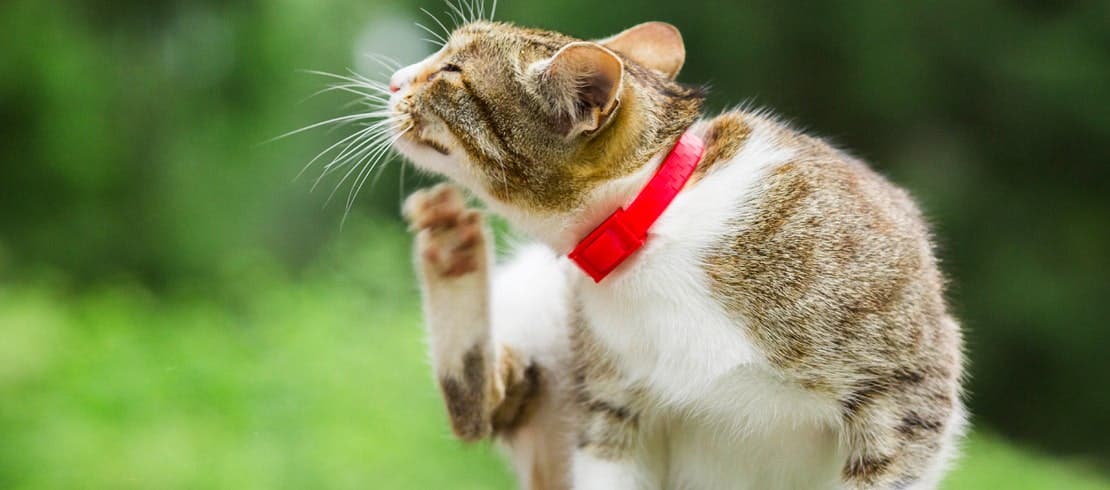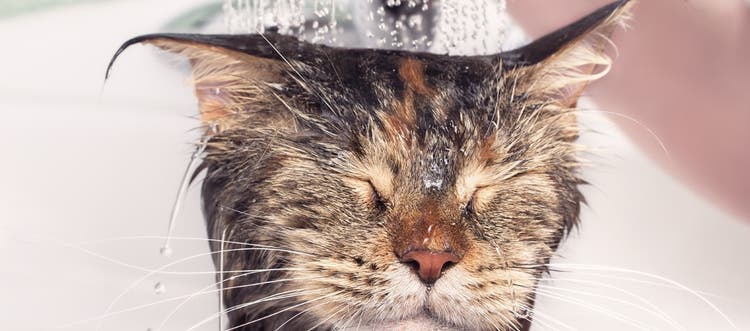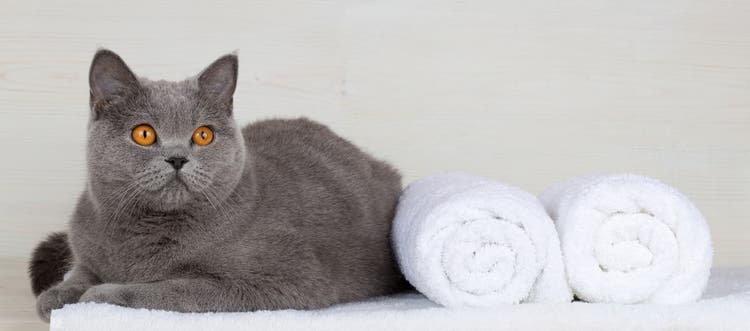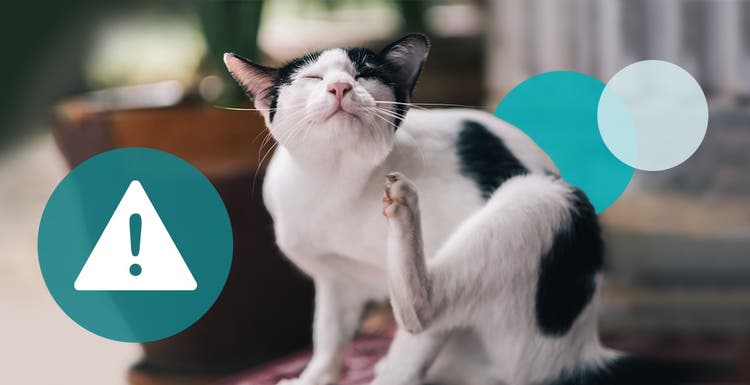Learn how to treat cat dandruff and reduce your cat’s discomfort.
It’s not uncommon to spot white, flaky dandruff in your cat’s fur. Dandruff in cats is a symptom of overly dry, irritated skin. While it typically isn’t serious, conditions that can lead to cat dandruff can cause discomfort. In severe cases, cats may scratch or lick their skin raw, so it’s important to treat dandruff as soon as it appears.
Here’s how to diagnose and treat this common feline skin condition.
How Can I Tell If My Cat Has Dandruff?
Dandruff, with its telltale small, white flakes, is usually easy to see on your cat’s fur and can also be spotted on furniture and bedding. Cats with dandruff may scratch more than usual.
Why Does My Cat Have Dandruff?
Cats can develop dandruff for several reasons.
- Lack of fatty acids in their diet. Just like humans, cats need a balanced diet to remain healthy. Omega fatty acids like fish oil are particularly helpful for maintaining healthy skin, so if your cat’s diet lacks these essential nutrients, this may be the cause of their dandruff.
- Dehydration. Cats need lots of water — around one ounce per pound of body weight a day. If your cat isn’t drinking enough, it can cause dry, flaky skin. A dry environment — for example, an overheated house in the winter — can also cause skin dryness.
- Grooming issues. If you’re seeing flakes or hair clumps only near the base of the tail and lower back, your cat may not be able to reach these areas to groom properly. This issue is common in obese cats.
- Potential health issues: Cat dandruff can sometimes signal a more pressing health issue, like parasites (such as mites, fleas and lice), allergies or feline diabetes. Check with your veterinarian to rule out other health issues before treating your cat’s dandruff.

How Can I Help Get Rid of My Cat’s Dandruff?
Once you’ve ruled out an underlying health condition, dandruff is easy to treat at home with some slight alterations to your cat’s routine.
- Feed your cat a nutritious diet. Make sure the food you feed your cat is formulated for skin health. Consider adding a supplement, like fish oil, to provide additional omega-3 fatty acids. Choose a supplement specially formulated for cats, and check with your veterinarian to determine the proper amount.
- Groom your cat with a brush or comb. Gently brush your cat two to three times a week to remove loose hair and softly brush out any mats. Make sure to brush in the direction of hair growth. This will help keep their skin healthy and remove dandruff. It also gives you a chance to bond with your cat.
- Try a special shampoo. Pet shampoos are specifically formulated to keep cats’ hair and skin healthy. Bathing your cat with a soothing, moisturizing shampoo can help relieve itching, remove dandruff and prevent it from returning. Never use a human shampoo for a cat — it will likely make the dandruff worse.
- Help your cat maintain a healthy weight. A cat’s overall health affects their skin health, and cats that maintain a healthy weight are able to groom themselves more effectively.
- Keep your cat hydrated. The more water your cat drinks, the healthier their skin will be. If your cat prefers running water, consider providing a fountain to encourage them to drink more. Introducing wet food into your cat’s diet is another easy way to increase hydration and improve the condition of their skin.
- Use a humidifier at home. Keeping the air at home moist can help prevent your cat’s skin from drying out and can reduce the likelihood of dandruff. Try running a humidifier in the rooms where your cat spends the most time.
Dandruff in cats is common and relatively easy to manage, but if the problem persists, make sure to visit your veterinarian.

Free Form™ Omega-3 Fish Oil for Dogs & Cats
A supplement for dogs and cats that supports the health of your pet’s skin and coat, joints and immune system with highly concentrated, omega-3 fatty acids. And it comes in two convenient forms so you can choose the one that’s right for your pet, no prescription required.






